So you are ready to drive your business forward, and you’re prepared to grow out of your comfort zone. What should be your next step? Growth is a process, and your commitment to remove all boundaries so that your customers can have the best customer journey is a great start. Changing the rules of traditional channels and innovating creative ideas with your customers as the focus will always be an excellent way to go. When done right, you will be able to add value through the whole marketing funnel by attracting new customers, engaging them, retaining them, and finally turning them into champions for your brand.
4 Ways B2B Marketers Can Spring Forward And Grow Content Marketing Success
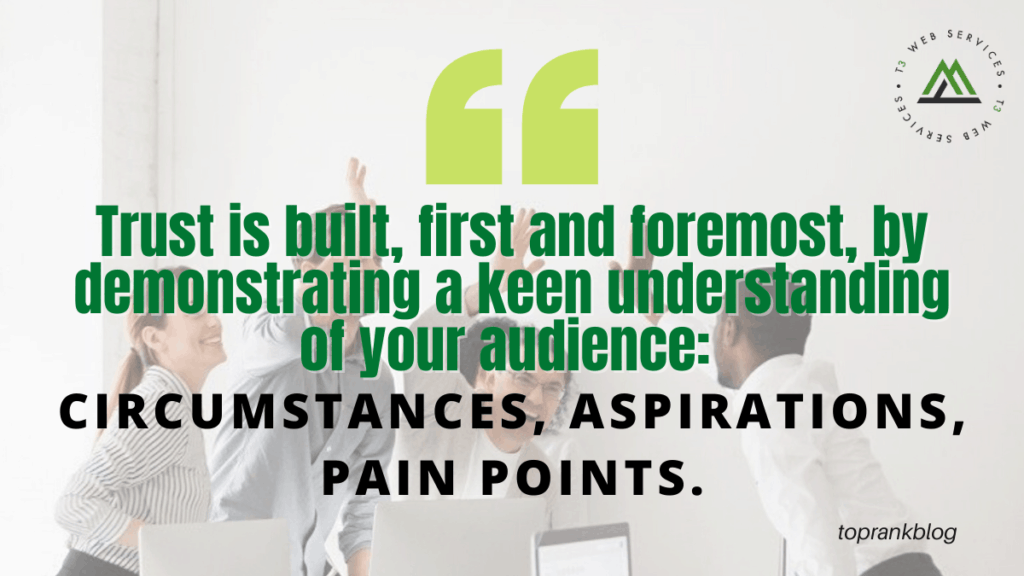

#1. Let your raving fans guide you forward
During the economic slowdown of the past year, it was common for organizations to look inward, immersing themselves in customer research and refocusing on relationships.
Taking a curious approach to understanding your best customers, and what they value most in your product, can really pay off.
In a recent writeup at The Next Web on surprising growth strategies for 2021, one suggestion from Andrea Hak is to tap into engaged and loyal users. She points to the example of SYLVAIN, a strategy and design consultancy hired by Spotify to help fend off an advance from Apple’s streaming music platform.
Hak shares this insight from SYLVAIN’s Managing Director, Sherry (Sherzad) Rahmatian, who argues that a narrow focus on acquiring new users and expanding to new audience segments is misguided:
“Power users and super fans often hold the secret sauce for a brand’s future growth. What we see is that smaller brands actually have an advantage in that they don’t have to dilute their marketing for the masses.
Instead, they can focus on decoding what exactly makes people obsess over them, and use that to continuously iterate a better and better experience. This will naturally filter out to a wider audience, without losing what made it special.”
Hak later notes that, “By the end of 2020, Spotify increased its number of premium subscribers by 29%, bringing it to a whopping 124 million.”
The size of your company and its customer base will dictate the extent you’re able to lean into this strategy. But most marketing departments today have some method of gauging the loyalty and strength of their customer relationships. Identify and study those most avid fans. Center your marketing on that which drives their affinity.
#2. Strategize around trust, purpose and empathy
It might be time to rethink your marketing messages of the past. More than ever, brands in the new era need to ensure they are aligning and resonating with their most valuable audiences, and developing connections that move beyond the traditional problem-solution framework.
In a recent study from Iterable, 87% of brand marketers “said their company felt the need to change its marketing strategies to better build consumer trust” amidst the turmoil of 2020. Ninety-one percent indicated that they plan to stick with this altered approach in 2021.

https://www.toprankblog.com/2021/03/4-ways-b2b-content-marketers-can-spring-forward/
7 Actually Smart Tips to Reduce Bounce Rate
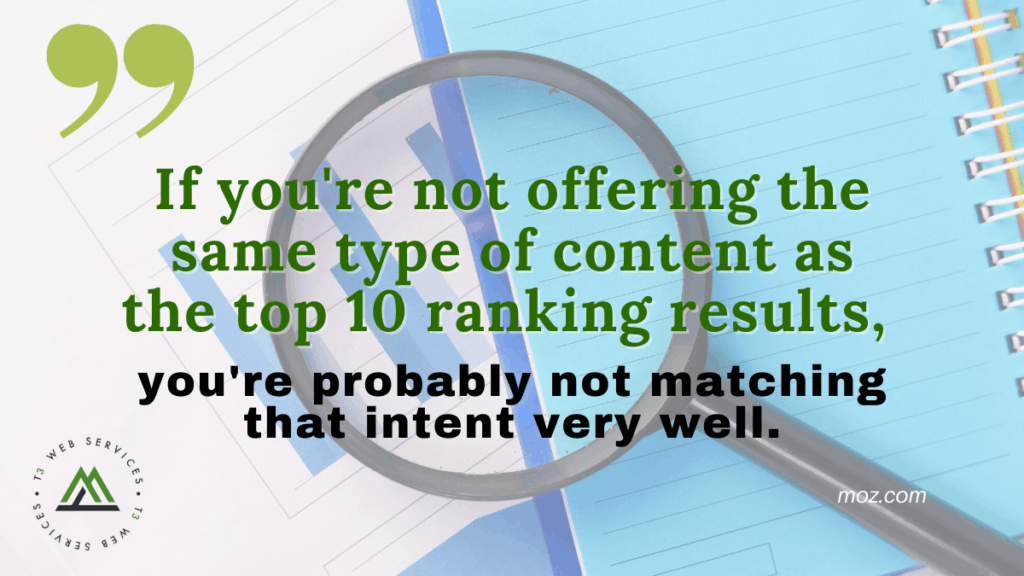

Is a high bounce rate bad? The answer is: it depends, but yes, sometimes it can be. Is a high bounce rate bad for SEO? That’s where it gets a little more complicated.
Now to be clear, before we get into these tips, I want to be very clear the goal is not to reduce your bounce rate number. It’s just a number. It doesn’t mean anything. The goal is to increase engagement and to increase satisfaction, to make your users happier. Just reducing your bounce rate, that doesn’t do anything. But if you make your users happier, give them what they’re searching for, that’s what we’re trying to do, and we’re using bounce rate as a proxy to measure that along with other metrics, such as time on site, the number of pages visited, and things like that.
1. Page speed
So we’re looking to make users happier. So how do we do this? How are we going to lower our bounce rate? Well, seven quick tips, very basic stuff in SEO. First of all, page speed. It’s not very sexy, but I included it here because out of all of these tips improving your page speed is probably the number one way to guarantee a reduced bounce rate.
I’ve seen it on hundreds of sites. Make your site faster, bounce rate goes down. Why? Well, for one, more people can simply access your content. They’re not waiting for it to load. They’re in the subway, on their cell phone, it loads faster. Second, it’s just a better experience than if they’re waiting for images to appear and things like that.
It will almost definitely guarantee to lower your bounce rate. This is the number one reason that, in my opinion, you work to improve the speed on your website. Yes, speed is a Google ranking factor. It is a confirmed Google ranking factor. In most cases, though, it’s a pretty small one.
But if you improve engagement and satisfaction with your speed, that has downstream effects that have much broader, wider SEO implications. It’s the number one reason to improve speed, not for the ranking benefit, but for this reason alone. Yes, this includes the upcoming Core Web Vitals that are coming out, that are going to be a ranking factor soon.
2. Broaden intent satisfaction
So one, nail your speed. Two, the easiest way to lower bounce rate is two broaden your intent satisfaction. Now what do we mean by this? Are we satisfying the intent that people came to your site for in the first place?
For example, someone searches for “Nike shoes.” Well, we want to rank for “Nike shoes,” but we don’t really know what the intent is of the person who searched. Do they want to buy Nike shoes? Do they want reviews of different Nike shoes? Are they looking for pictures of Nike shoes? It could be any one of those things. The more broadly we can satisfy that intent on the page or link to other resources, the better we’re going to do with engagement and our bounce rate.

https://moz.com/blog/reduce-bounce-rate
Working With Cross-Departmental Decision Makers for SEO Success
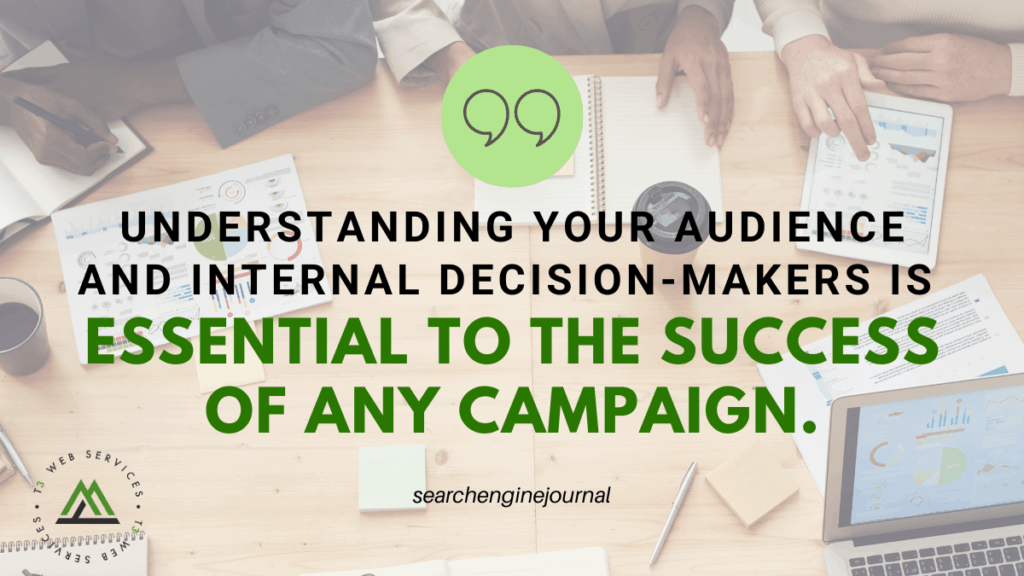

Make Friends & Influence People
Many of us in the search engine marketing industry hang out in our own “caves” with our own tribe.
But when you are dependent on others to achieve your goals, it helps to have friends in your corner.
Whether it’s getting meta tags placed on a site where we don’t have access, pushing new content live, or building links, search engine marketing does not live in a vacuum.
It truly takes a village to optimize a site.
If you are an in-house search engine marketer, you understand the value of someone owing you a favor when it comes to getting things done.
If you are at an agency, having an effective champion at your client’s place is more valuable than all the SEO knowledge in the world.
Status calls can’t just be about status.
In the account management training at my agency, we preach that at least 30% of the time on most client calls should be about items other than search engine optimization.
We talk about our client’s lives, the weather, and even what is going on in the rest of their jobs.
In short, we work to become friends with our clients.
After all, it’s harder to fire a friend than it is to fire a contractor.
But beyond just keeping our jobs, we get more done when we work with people that we like and respect.

https://www.searchenginejournal.com/cross-departmental-collaboration-for-seo/398709/?ver=398709X3
Google Predicts These 4 Pandemic Changes Are Permanent
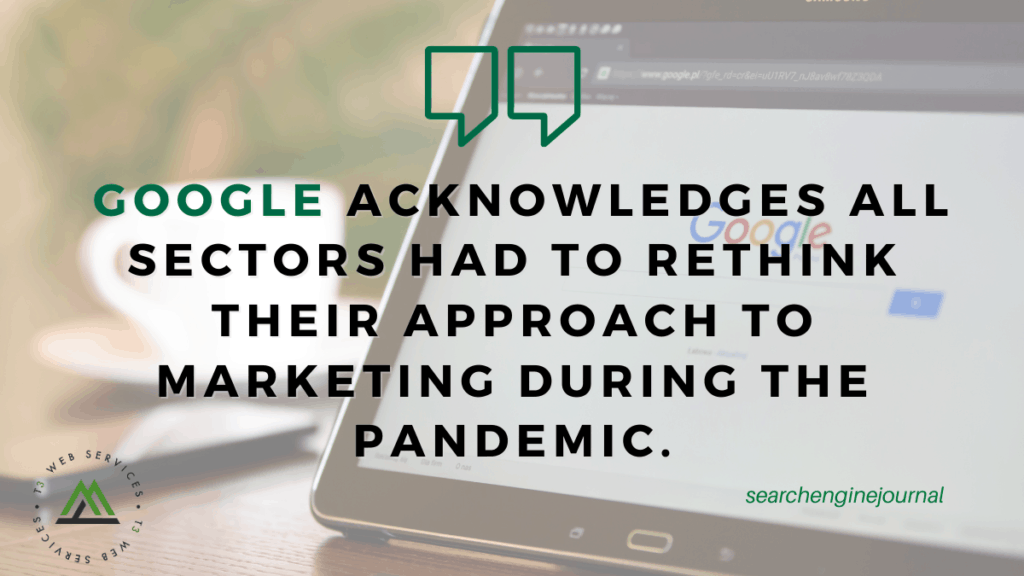

Companies have changed the way they do business since the pandemic. In a new report, Google forecasts which of those changes are here to stay.
Citing search data to back up some of its predictions, Google says these pivots will become permanent:
- Using real-time tracking insights to rapidly respond to consumers.
- Holding virtual events.
- Working from home.
- Offering more convenient ways for consumers to buy online.
Rapid Response to Changes in Consumer Habits
Consumer habits are evolving at a frantic pace throughout the pandemic, which is forcing businesses to get better at tracking real-time insights and responding to the data.
Habit Change: Searching Before Shopping
Consumers are increasingly turning to Google Search to find which businesses have items in stock before venturing out to a store.
Google points to data from the early months of the pandemic. Searches for “who has” and “in stock” were up over 8,000% year over year in the U.S.
Habit Change: Consumers Will Find Alternatives
Consumer behavior throughout the pandemic shows they’re keen to find alternatives when something they depend on gets taken away.
When schools were shut down, Google says searches for “online learning” went up 400% year over year.
When gyms were forced to close, searches for fitness apps jumped 200% year over year.
When the world became too isolating, people sought to cultivate connections online. Searches that included the phrase “with friends online” went up 300% year over year.

https://www.searchenginejournal.com/google-predicts-pandemic-changes/3991
6 Ways to Bring Empathy Into Your Marketing Strategy (in 2021 and Beyond)


What is empathetic marketing?
Empathy is the ability to see events and situations from another’s perspective — to put yourself in their shoes. For brands, empathetic marketing is about seeing the world through the user’s point of view. It helps you place the customer at the center of your marketing strategy and work outwards.
But it’s important to remember that being empathetic also means being genuine — you can’t create emotional marketing campaigns for the sole purpose of manipulating customers.
Empathy is believable when it creates authentic connections between brands and users. You have to build trust and organic relationships throughout the customer journey.
Why is empathy important in marketing?
We’ve outlined how empathy works in marketing, but there are numerous reasons why it’s important, especially in 2021 and beyond.
Emotion and connection are more necessary now than ever before. The way we live and work has changed in ways we couldn’t have imagined. “Business as usual” is a thing of the past, because a lot of emotion is being generated about the future — and these emotions impact how consumers react to marketing campaigns.
The range of human emotion is massive, from positive emotions like joy, interest, and amazement, to the more negative, such as fear, anger, or sadness (anger, especially, can be a powerful motivator for sharing content). Campaigns need to be geared towards evoking and connecting with these real emotions.
1. Understand your audience’s pain points
We’ve mentioned the importance of walking in your audience’s shoes to get a feel for what they need right now. This is the time to update your buyer personas to reflect the new realities your customers are experiencing.
Use social listening to understand the sentiment around your brand. But don’t engage in every conversation, even if you’re feeling defensive. If customers aren’t happy with your brand, you should be learning why that is and how you can fix it.
Of course, nothing beats talking to your customers directly. Schedule a call or send out a short survey and ask them a few questions:
- Are they happy with your brand?
- What product/service has benefited them the most?
- What would they like to see improved?
2. Adapt to audience needs
Now that you know what your audience needs from the world and from your brand, you need to adapt your business model. It’s also worth looking into your current customer service process to ensure your wording and tone are more empathetic.

https://moz.com/blog/empathetic-marketing
How to Create Facebook Video Ads People Will Watch
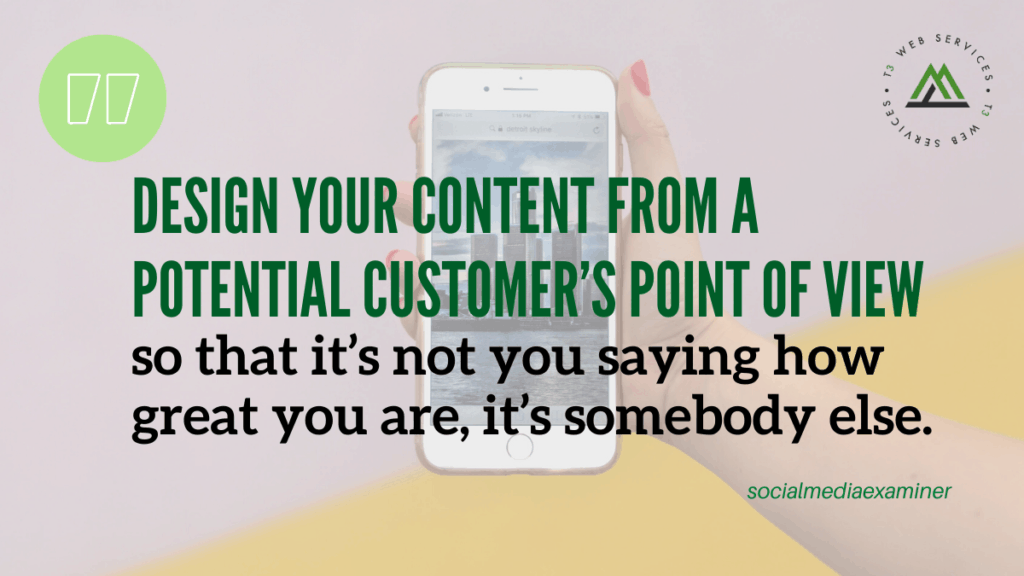

Here are two ways to make your Facebook video ads look more native to the platform so you can capture your audience’s attention and take them on the journey to being buyers.
#1: Set Up an Interview-Style Facebook Video Ad
This first approach to getting people to watch your Facebook video ads is to incorporate an interview element. But this isn’t a traditional interview video where the subject is looking straight at the camera as they speak. Instead, have the person who’s talking look away from the camera as if someone off-screen is interviewing them.
This interview format can make their narration feel less rehearsed or stilted, which is perfect for a testimonial or an appearance by a company executive. It makes the video more authoritative by design, which results in something that feels more like organic content when people see it in their Facebook feed.
#2: Create a Text-on-Screen Facebook Ad Video
You’ve undoubtedly seen lots of text-on-screen videos on Facebook, where the story is told primarily through video clips and photos that are overlaid with text.
The reason these videos feel so native is that a large percentage of people on Facebook don’t watch video with sound. When they’re scrolling through the feed, video naturally autoplays. So if you can grab their attention with a strong headline, you can get people to click into the content, where you can take them on the journey to becoming a customer.
https://www.socialmediaexaminer.com/how-to-create-facebook-video-ads-people-will-watch/
10 Things to Think About When Using Email Marketing
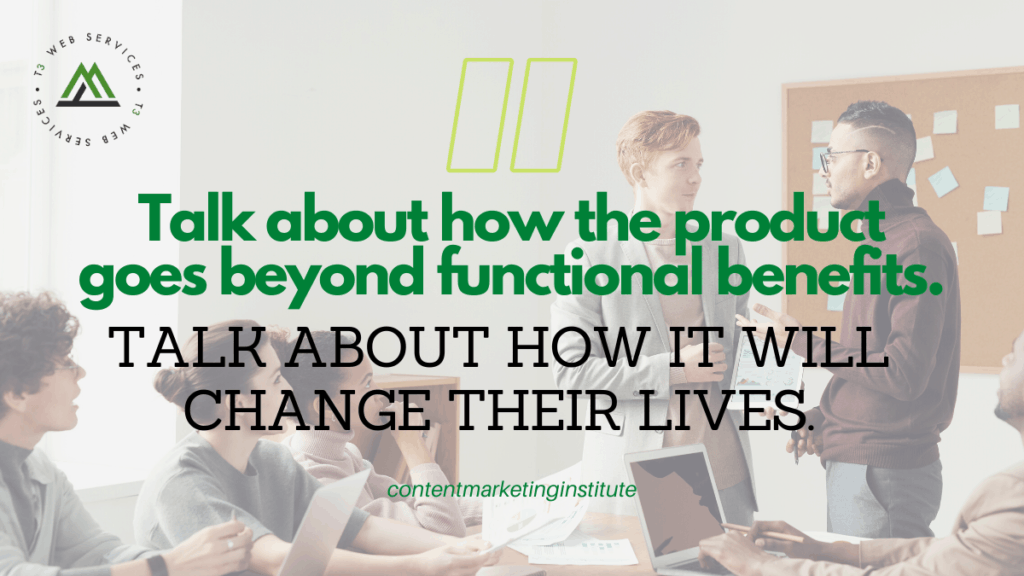

Personalized content
Customizing your content continues to be a way to show you care about your audience. As Jeanne Jennings, founder and chief strategist of Email Optimization Shop, says, “This is the year that marketers finally embrace smart, sophisticated customization and personalization. This boosts relevance, which is key to getting opens, clicks, and conversions.”
Meaningful content
Beata Linz, a brand, digital, and email marketing consultant, says you should no longer send direct sales promotion emails, like “Jog pants you should wear at home.” Pure product offers sound disconnected. Instead, talk to your customer as if they were a friend sitting across from you.
Empathetic content
Magan Le, content marketing manager at Litmus, says all emails, including automated ones, should adjust for tone given that consumers are still in a vulnerable and sensitive state thanks to the pandemic. This is the only way to build genuine connections.
AMP technology
Accelerated mobile pages (AMP), a Google-supported open-source technology, significantly increases load speed, improving the viewer’s mobile experience.
Mark Robbins, software engineering lead manager technical staff (LMTS) at Salesforce, expects to see more people using AMP for email alongside interactive HTML for a better interactive strategy. He believes this will lead to a wider reach, a better experience, and better results.

https://contentmarketinginstitute.com/2021/03/experts-thoughts-email-marketing/


Leave a Reply